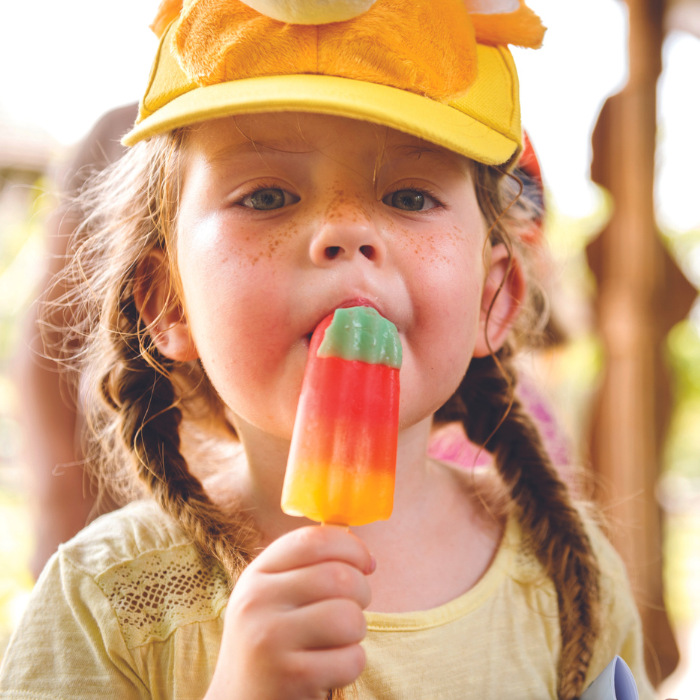
Babies are not born with a natural sense of being road-smart. And yet every day, thousands of New Zealand children make the journey to and from school safely. It’s up to us parents to teach our children how to be safe pedestrians, safe bikers and safe passengers.
walking to school
Child pedestrian injuries are a leading cause of traffic-related child deaths. School-age kids (5- to 9-years) are the most at-risk.
- Teach your child to walk on the footpath on the far side from the road and to always use pedestrian crossings or traffic signals. They must make sure that any approaching vehicles have seen them and can stop before they step out.
- Remind them that when they have to cross the road without a pedestrian crossing, they must wait one step away from the kerb, not right at the edge. They need to look and listen for traffic coming from all directions and cross only when it’s safe to do so – it takes time for a vehicle to stop, so they have to be patient and wait for a gap in the traffic.
- Remember: cars don’t have to stop for pedestrians at courtesy crossings (unpainted crossings often made of other materials like bricks or pavers). Treat them as carefully as though there were no crossing.
- Hold hands if walking with a young child near roads or in carparks.
- Children under 10 years old should ideally walk with the walking school bus, an adult, or older sibling.
biking to school
In a crash, bicycle helmets reduce the risk of severe brain damage by as much as 74%.
The best way for children to learn about bicycle safety is from observing their parents. If possible, teach your children good habits by biking with them.
- All cyclists must wear a cycle helmet (see our biking helmet tips below).
- Don’t forget that bikes need to be checked regularly to ensure chains aren’t loose, tyres aren’t flat, the reflectors are working and brakes are in good condition.
- Encourage your child to wear a high visibility vest or jacket. Be seen to be safe.
Children under 10 years old should always bike with an adult. - When possible, cycle on the footpath. Beware of concealed driveways.
- Communicate with other road users. Use hand signals and check over your shoulder before making a move.
- Scan for parked cars whose doors may open, uneven surfaces and debris on the road, children and pets who may run into the road without looking, cars turning into or out of side streets.
- Be predictable: ride in a straight line, use hand signals.
- Always obey the road rules.
- In a crash, bicycle helmets reduces the risk of severe brain by as much as 74%.
travelling by bus
- Wait at the bus stop, well away from the side of the road.
- Stand still, avoid playing games that involve running or dodging.
- Make sure the bus has stopped before climbing on.
- Carry your backpack in your hand, otherwise it may get caught in the door.
- Let younger children embark first.
- Once on the bus, sit down and stay seated. If you have to stand, hold on to the handrail or the back of a seat.
- Get off the bus carefully, without pushing.
- If you need to cross the road, wait until the bus has driven past and you can see clearly up and down the road before crossing.
driveway safety message: drivers
Most children injured in private driveway incidents are toddlers, and the driver is usually the father, mother or a close family member.
- Drive slowly on and out of the driveway.
- Open your window and turn off your radio so you can hear what’s going on outside better.
- If you can, avoid reversing your car out the driveway. Driving forwards will improve your visibility, particularly if your driveway is concealed from the footpath.
- If you have to reverse, always double check your driveway beforehand. Never depend on the rear-view mirror, because young children are too small to be seen this way. Reverse slowly.
- Before you drive, check all young children are safely off the driveway – either in the house or behind a locked gate.
- As you drive on or out of your driveway, look out for pedestrians and cyclists.
driveway safety message: at home
- When at home, keep the children away from driveways. Shut all gates with access to roads and footpaths. If your house doesn’t have a fence, set firm boundaries for where the children are allowed to play. An easy way to do this is pick a physical thing like the edge of the lawn, and tell your children that is the line they must not step over. Alternatively, mark it with chalk or a piece of string. From time to time, ask the children to show you the line they must not step over.
- When visiting someone, check the driveway safety and set rules as to where your children may and may not play, and which lines shouldn’t be stepped over. Ask them to report back to you if they’ve run out of things to do, rather than to go exploring beyond the boundaries.
- Make sure your children play with ride-on bikes, scooters or balls within a safe area.
driveway safety message: walking
- Teach your child to be careful when crossing driveways, particularly if there are fences or shrubs that make it difficult to see a car approaching. Similarly, a driver coming out of a driveway may not see people walking. Look to see if there are any oncoming or exiting vehicles. Make sure the car driver has seen you.
- Teach kids to use their ears to listen for the noise of an engine when approaching a driveway.
- Only cross once the driveway is clear of traffic.
- Before you walk a route with your child, or let them walk it alone, do the walk by yourself and make a note of all the hidden driveways. When you walk with your child, point them all out for several days, then ask your child to point them out to you and rehearse how to cross driveways.
- Most children injured in private driveway incidents are toddlers, and the driver is usually the father, mother or a close family member.
car drop-off
When you drop off your child by car:
- Teach them to get in and out on the footpath side of the car.
- Park away from intersections and driveways.
- Drive slowly and with caution outside schools.
biking helmet tips
Whether on the footpath or on the road, the bike helmet must always fit correctly.
- Place the helmet squarely on your head making sure it covers your forehead.
- Do up the chin strap tight enough so it can’t slip back over your chin.
- Adjust the back and chin straps so the buckle on each side sits just below the ear lobe.
- Tap the helmet – it shouldn’t budge.
Buy a standards-approved helmet that’s brightly coloured. Make sure it’s the right size: a helmet that is too large, even with padding, won’t be safe.
Useful websites:
New Zealand Transport Agency, www.nzta.govt.nz, safekids.org.nz, www.brake.org.nz
[byline]
Eve Douglas
[/byline]
Images: Pinterest








